Europe is the second smallest continent in the world. However, there are more developed countries here than on any other continent. There are 51 different countries in Europe. Europe is covered by a variety of landscapes like tall mountains and deep valleys, long coastlines, and enormous rivers. Because many of these rivers are so large, they often cross boundaries, flowing in and out of many different countries.
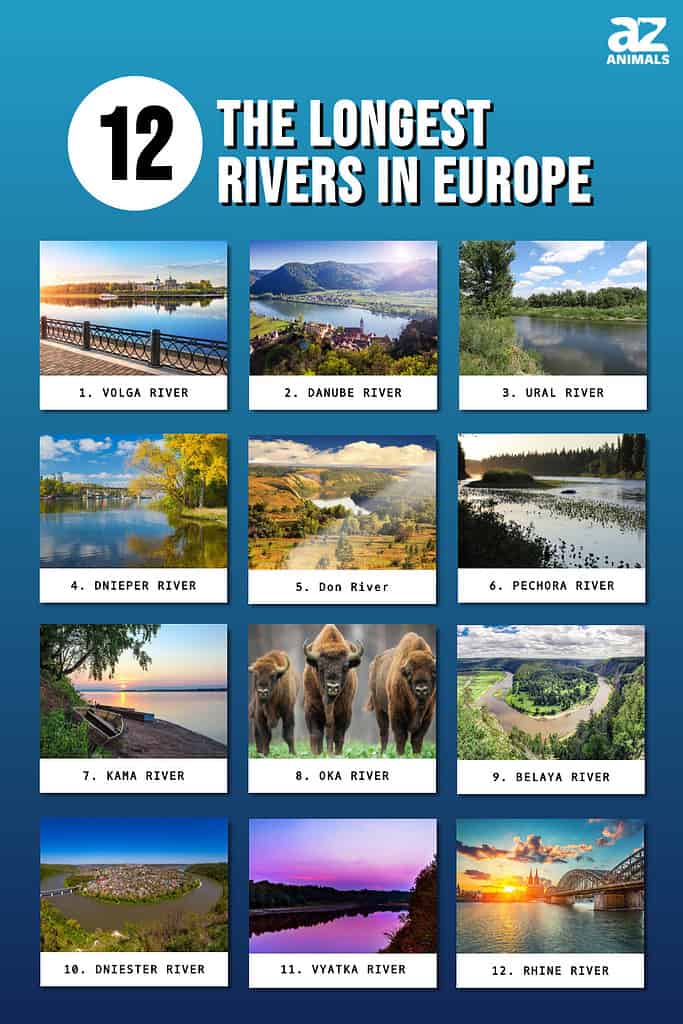
What do these rivers look like? How are they used by the people here? What types of wildlife live in and around these rivers? Let’s look at the 12 largest rivers in Europe. As we explore these rivers, we will be measuring their size based on length, rather than depth or discharge amounts.
12. Rhine River – 765 miles (1,230 km)
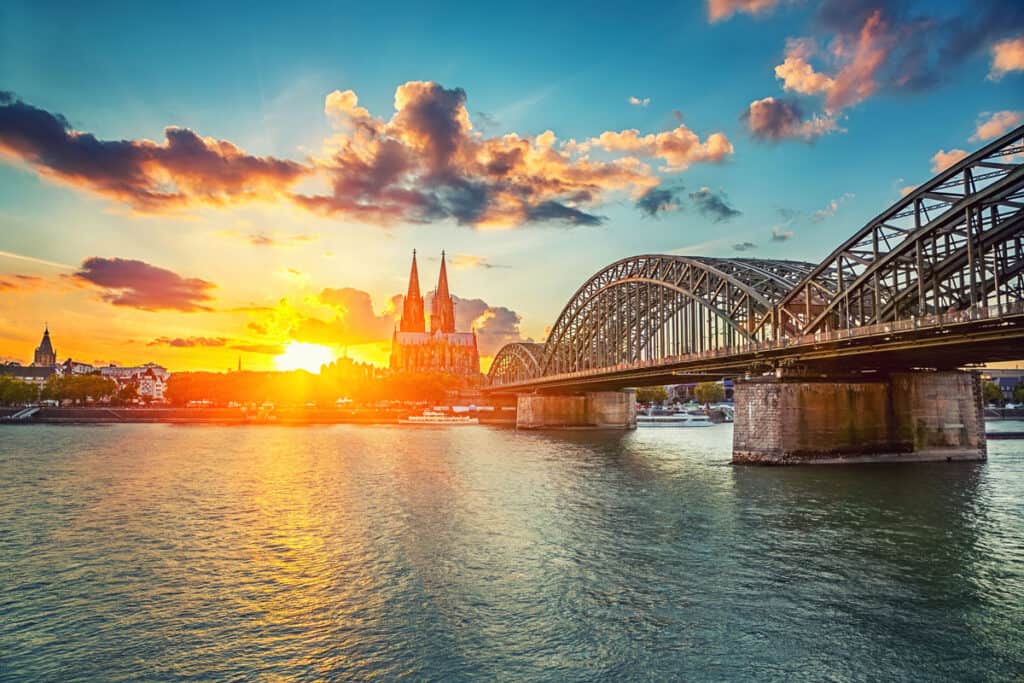
The Rhine River flows through six different countries
©iStock.com/sborisov
The Rhine River is 765 miles long, flowing through Switzerland, Liechtenstein, Austria, Germany, France, and the Netherlands. Since the time of the Roman Empire, the Rhine River has been used as an important transport route in Europe, bringing trade and goods inland. The Rhine River is also a cultural icon for many Europeans; it is the setting for Das Rheingold, the first opera of Richard Wagner’s infamous Der Ring des Nibelungen (you might be familiar with a song from this epic-opera, “Ride of the Valkyries”). In Wagner’s opera, the Rhine River is where the rheinmaidens protect their hoard of gold.
11. Vyatka River – 816 miles (1,314 km)
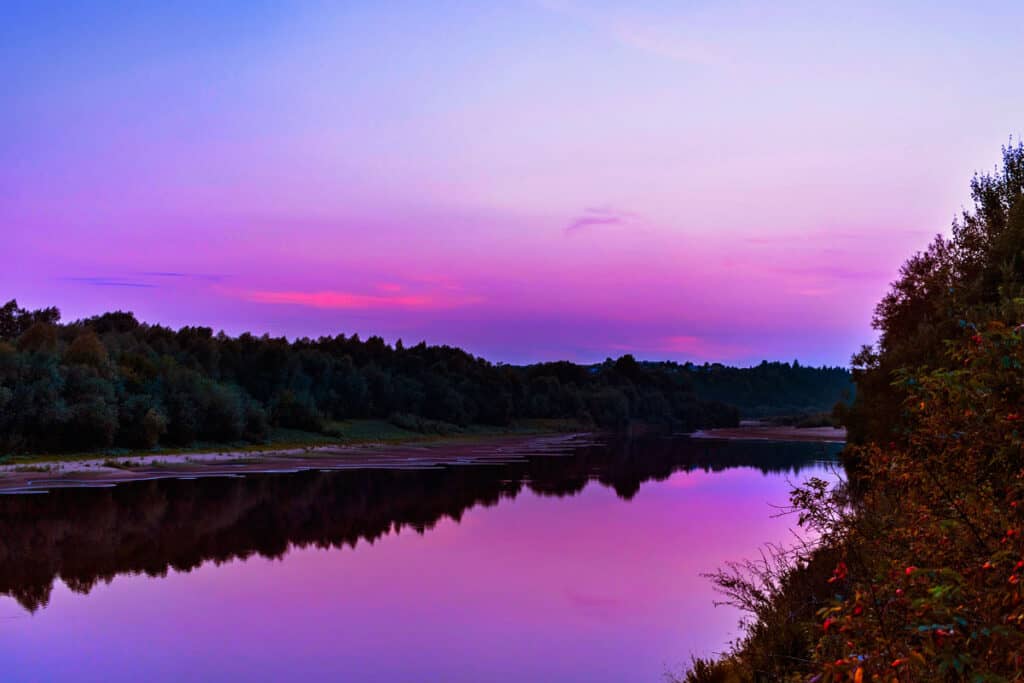
The Vyatka River is a right tributary of the Kama River
©iStock.com/Alx_Yago
The Vyatka River is the eleventh largest river in Europe. It is 815 miles long, flowing through Kirov Oblast and the Republic of Tatarstan in Russia. The Vyatka River contains numerous fish, like tench, zander, European perch, bream, pike, and roach.
10. Dniester River – 840 miles (1,352 km)
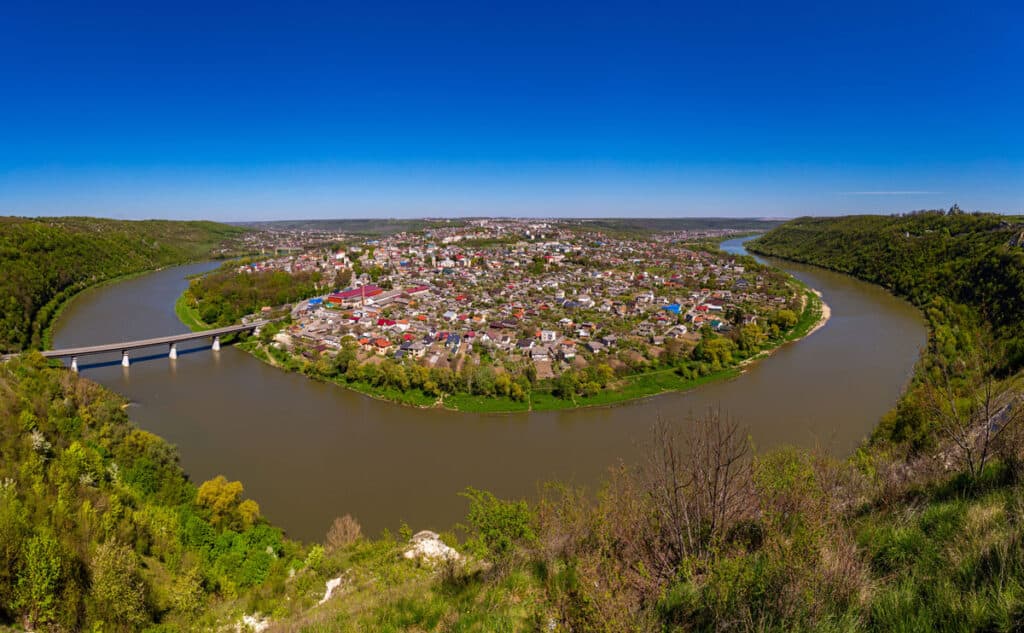
The Dniester River is the primary water artery of Moldova
©iStock.com/Sergii Zyskо
The Dniester River is the second-longest river in Ukraine and the tenth-longest river in Europe. The river begins on the north side of the Carpathian Mountains and flows for 840 miles until it reaches the Black Sea near Odessa. The name of the Dniester River comes from an ancient Iranian phrase, dānu nazdya, which means “the close river.” The Dniester River frequently floods and often causes damage to nearby areas.
9. Belaya River – 889 miles (1,430 km)
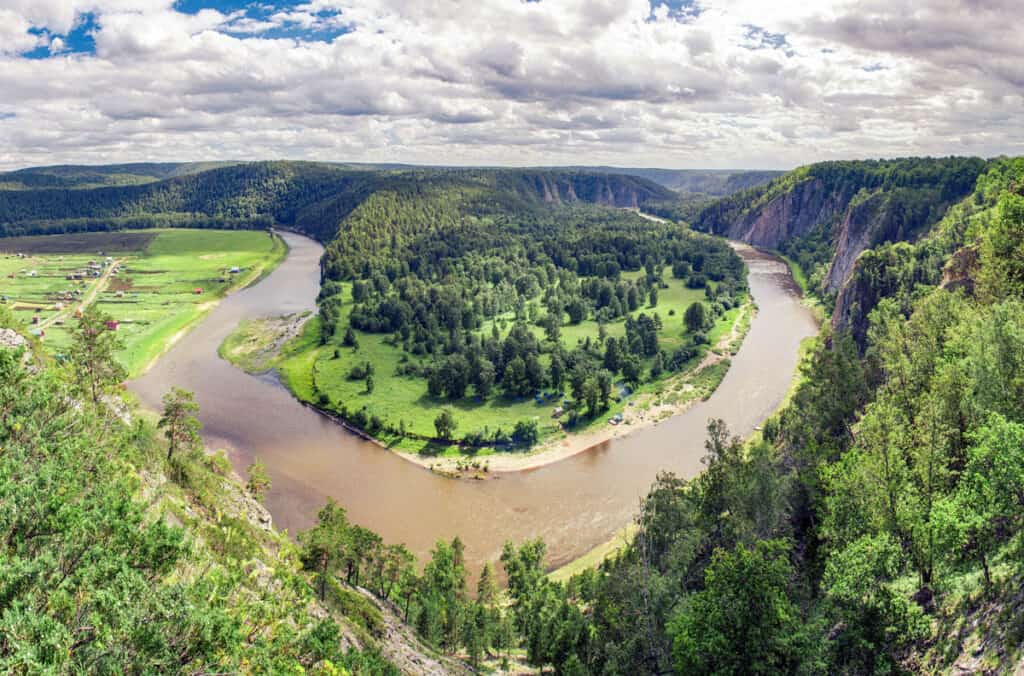
The Belaya River is one of the most beautiful rivers in Russia
©iStock.com/Alexander Novikov
The Belaya River is the 9th largest river in Europe. It is 889 miles long, flowing through the Bashkotostan Republic in the western and central parts of Russia. The Belaya River is one of the most important and most beautiful rivers of Bashkortostan. The Belaya is a famous fishing destination with catfish, zander, pike, sterlet, asp, taimen, and brown trout.
8. Oka River – 932 miles (1,500km)
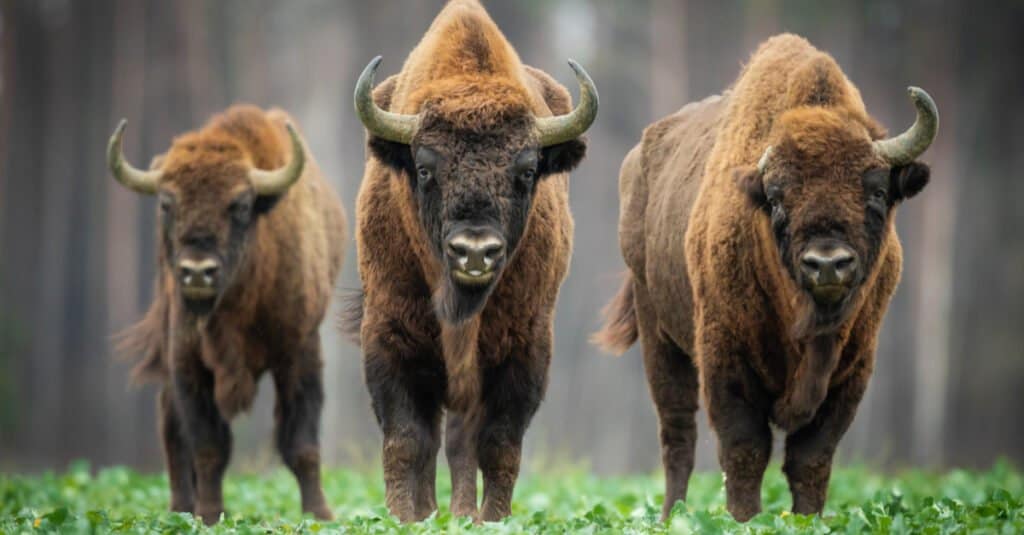
The Oka River flows past the Prioksko-Terrasny Biosphere Reserve, home to a European bison breeding nursery
©Szczepan Klejbuk/Shutterstock.com
The Oka River is the eighth-longest river in Europe. It is also the most navigable river in Europe. The Oka River is 932 miles long, starting in the central Russian upland. It winds through the valley to Kaluga, then flows east across the lowland to Nizhny Novgorod where it joins the Volga River.
Along its journey, the Oka River passes many cultural and historical sites, like mosques in Kasimov, medieval monasteries in Murom, kremlins in Kolomna and Serpukhov, the homes of Russian painter Vasily Polenov and Russian poet Sergey Yesenin, and the ruins of Old Ryazan.
The Prioksko-Terrasny Biosphere Reserve is located on the left bank of the Oka River, opposite the town of Pushchino. This Russian nature reserve is home to 900 plant species, 130 bird species, and 54 mammal species. The Prioksko-Terrasny is especially known for its wisent, or European bison, breeding nursery. It is also home to a small herd of American bison.
7. Kama River – 1,122 miles (1,805 km)
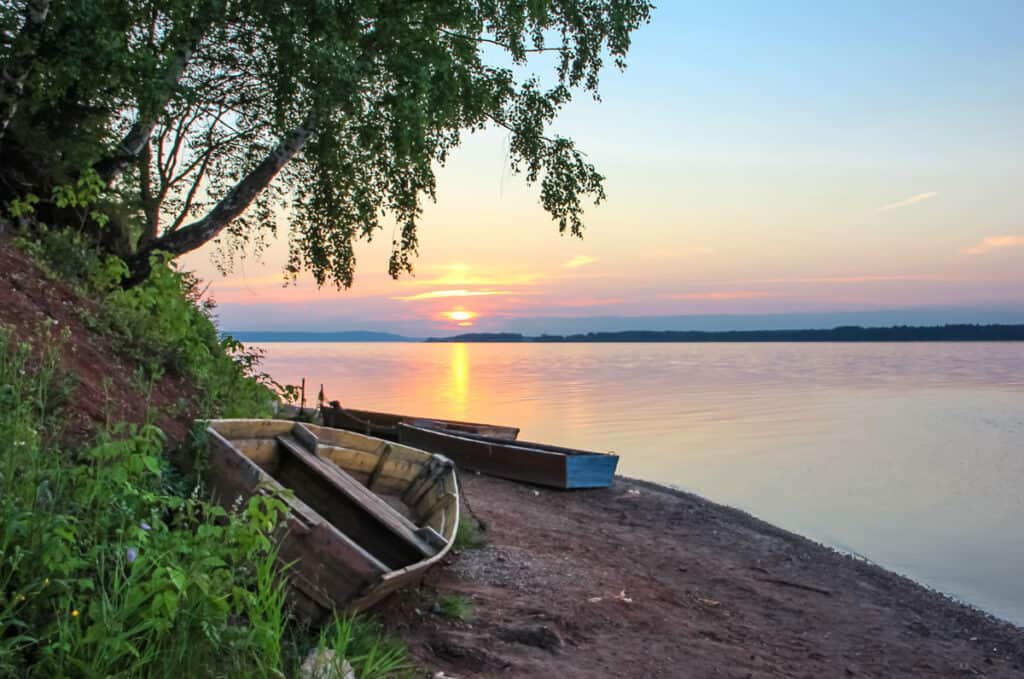
The Kama River is one of the most important rivers in Russia
©iStock.com/AlexandrDv
The Kama River is the third-largest river in Europe in terms of discharge. It is 1,122 miles long and runs through western and central Russia. It starts in Udmutia’s upland, and then flows into the Volga River Reservoir below Kazan. The Kama River is one of Russia’s most important rivers. Historically it was the route to the Urals and Siberia. It is also an important part of the Volga systems waterway.
6. Pechora River – 1,124 miles (1,809km)

The Pechora River flows through mountains and past forests of fir and spruce trees.
©iStock.com/Andrey Brattsev
The Pechora River (or Pečora) flows through northwestern Russia into the Arctic Ocean. It begins in the Northern Ural Mountains near Mount Koyp. The upper sections of the Pechora River are surrounded by fir and spruce forests. The current here is fast with rifts and rapids as it flows through the narrow valley. The middle section of the Pechora River is much flatter. There are forests and meadows here in the wide floodplain. The lower section of the Pechora River breaks up into separate independent channels, forming numerous islands. There are also boggy meadows spread across the wide floodplain. In some places, there are also sandy mounds where pine forests grow.
5. Don River – 1,162 miles (1,870 km)
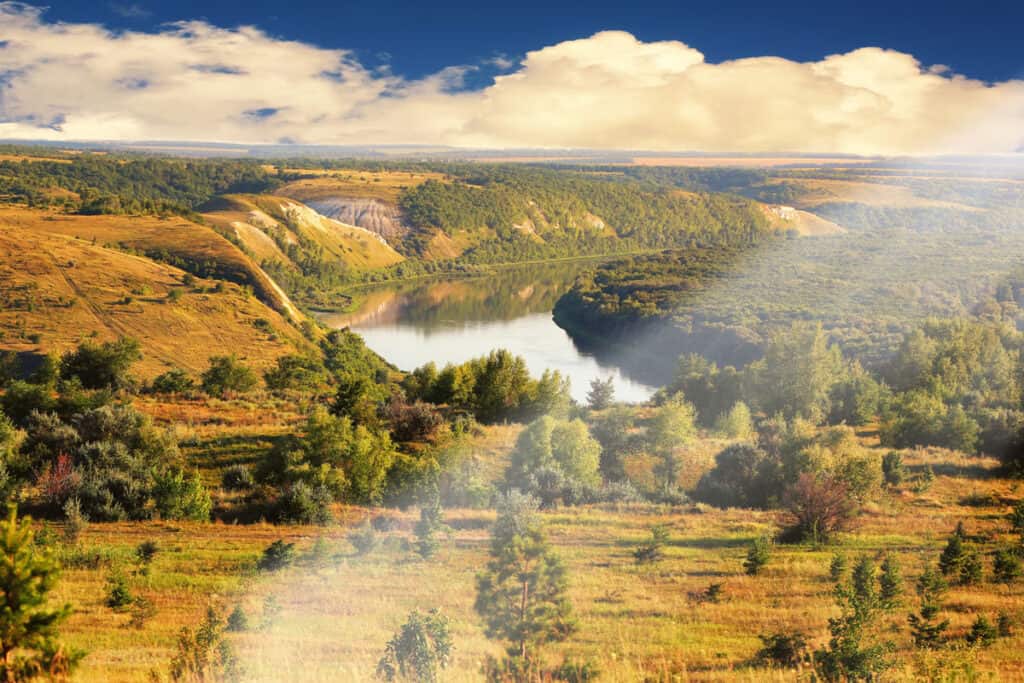
The Don River has always held significant value for traders, especially during the Byzantine Empire
©iStock.com/sabyna75
The Don River is the fifth largest river in Europe, measuring 1,162 miles long. It flows from Central Russia to the Sea of Azov in the Caucasus region. The Don River is one of Russia’s major commercial rivers. Peter I the Great, a famous ruler of Russia in the late 17th century and early 18th century, commissioned a hydrographic survey of the Don River so that he could know more about its course. The Don River provides the backdrop to the colorful novels written by Mikhail Sholokov in the 20th century.
Fun fact: The Greek philosopher, Plutarch, said that the legendary Amazon tribe from Greek Mythology lived along the Don River (Wonder Woman from DC Comics was an Amazon warrior).
4. Dnieper River – 1,367 miles (2,200 km)
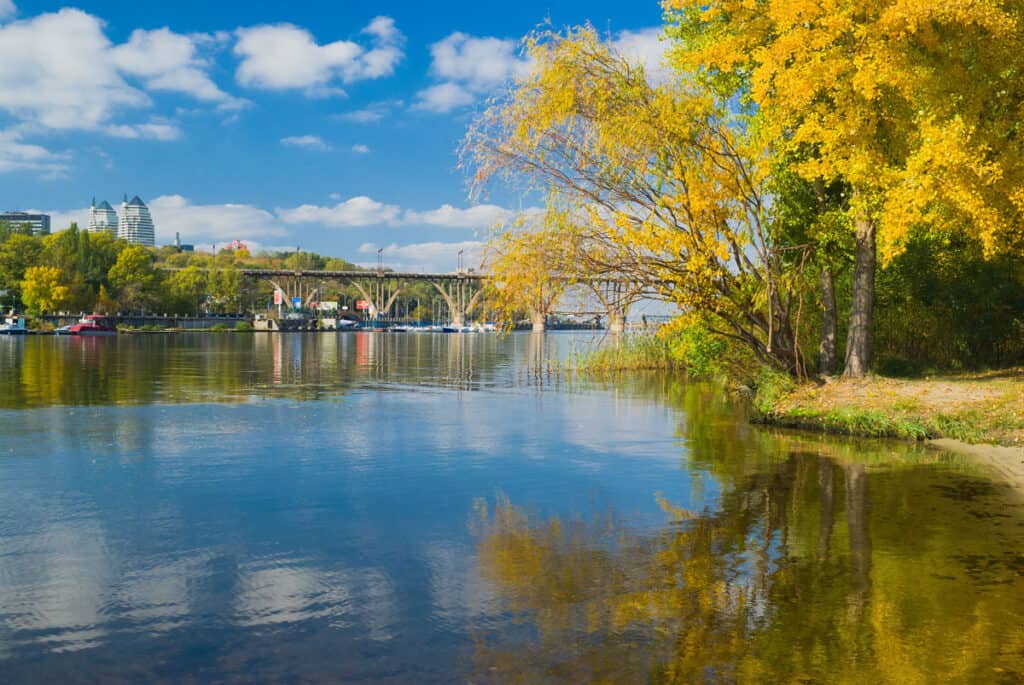
The Dnieper River flows through landscapes of forests, swampy terrain, and a forest-steppe area
©iStock.com/Yurikr
The Dnieper River is 1,367 miles long. It begins on the southern slope of the Valdai Hills in Russia. It then flows through western Russia, Belarus, and Ukraine and empties into the Black Sea. The Dnieper River is the longest river in both Ukraine and Belarus. The Dnieper River is also one of Ukraine’s national symbols and is mentioned in the Ukrainian national anthem. There are six sets of dams and hydroelectric stations on the Dnieper River that help to produce 10% of Ukraine’s electricity.
The name of the Dnieper River comes from Danu apara, an ancient Iranian phrase that means “the river far away” or “the river on the far side.”
It is also located close to the Prydniprovsky Chemical Plant radioactive dumps and Chernobyl Nuclear Power Station and Exclusion Zone. Because of this, the Dnieper River suffers from pollution and human influence.
3. Ural River – 1,509 miles (2,428 km)
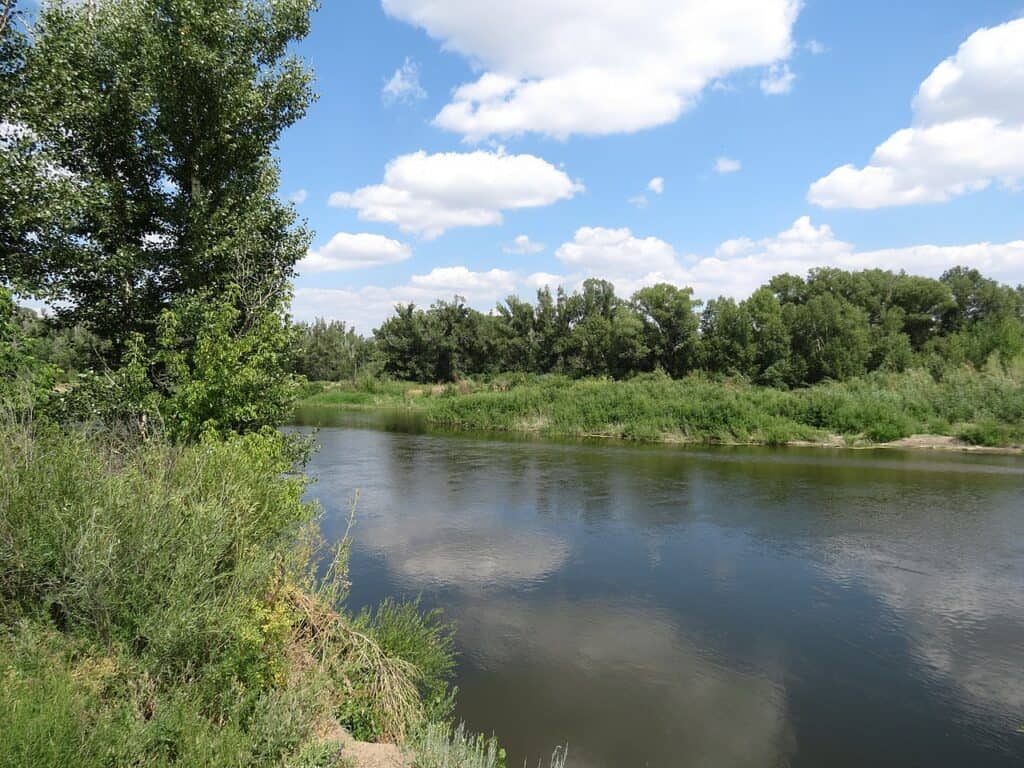
©
The Ural River is 1,509 miles long and flows through Russia and Kazakhstan. It begins in the southern Ural Mountains in Russia and empties into the Caspian Sea. The Ural River is generally considered the boundary between the Europe and Asia continents.
The Ural River and its surrounding area are an important habitat for countless species of wildlife. There are 47 species of fish in the Ural River, some of which are quite rare like the kutum, sterlet, Caspian salmon, and white salmon. It is also home to many reptiles like sand lizards, rat snakes, common water snakes, and bog turtles.
The Ural River is the habitat of about 48 mammal species, like the raccoon dog, house mare, European hare, wild boar, great gerbil, dwarf fat-tailed jerboa, northern mole vole, fox, elk, muskrat, wolf, brown rat, and saiga antelope. The Ural River also provides a habitat for two endemic animals that only live in this area: Bobrinski’s serotine (a type of vesper bat), and the marbled polecat.
The delta of the Ural River offers an extremely important wetlands area for migrating birds. Many endangered species of birds often stop here during their migration journey, like the glossy ibis, pygmy cormorant, ferruginous duck, white-headed duck, houbara bustard, dalmatian pelican, great white pelican, little egret, cattle egret, squacco heron, greater flamingo, black stork, and osprey,
2. Danube River – 1,777 miles (2,850 km)
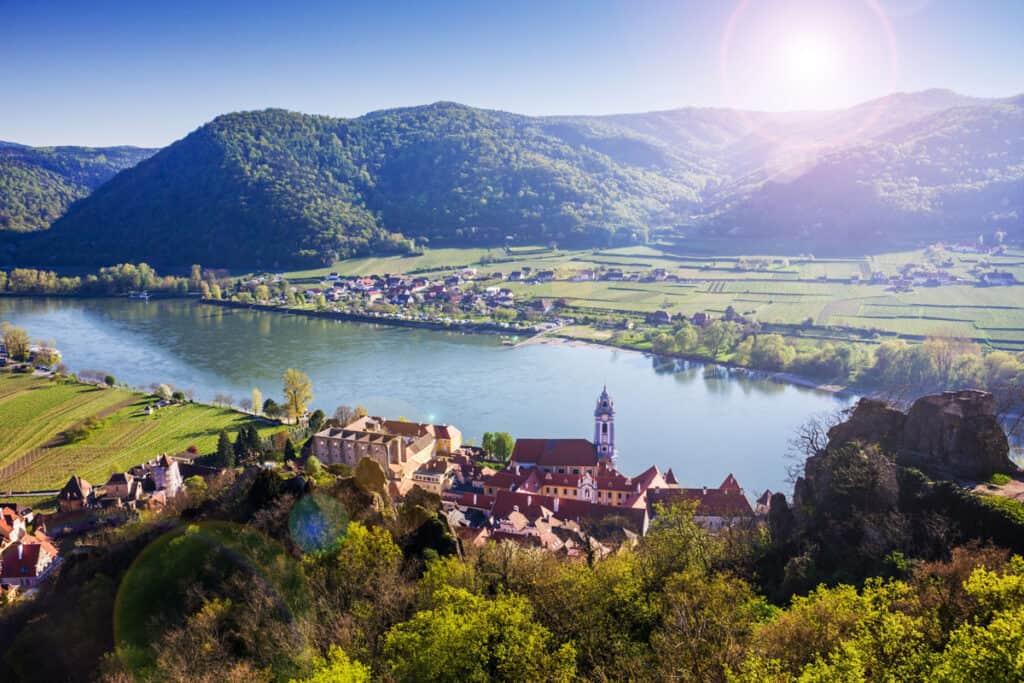
The Danube River is the longest river in Central and Western Europe
©iStock.com/Sergey_Fedoskin
The Danube River is 1,777 miles long, making it the longest river in Central and Western Europe. It is the longest river that flows through Germany, and the 2nd longest river in all of Europe (following the Volga in Russia). The Danube begins in the German town of Donaueschingen and follows a path that flows through or along the borders of 10 different countries!
That figure is higher than any other river in the world and includes Germany, Austria, Slovakia, Hungary, Croatia, Serbia, Romania, Bulgaria, Moldova, and Ukraine.
Fish found in the Danube include tench, European seabass, burbot, zander, pike, Wels catfish, huchen, carp, sturgeon, salmon, trout, mullet, and eel. The Danube was vital to the growth of central and southeastern Europe. It serves as an important commercial highway and even today is a popular destination for river cruising.
1. Volga River – 2,194 miles (3,531 km)
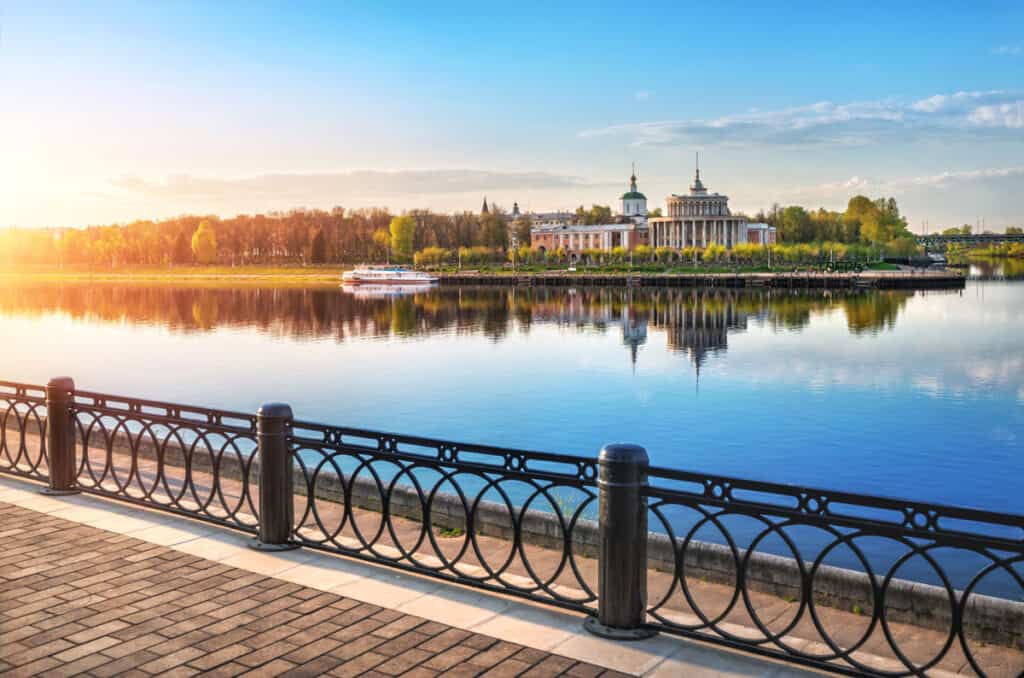
The Volga River is a cherished and beloved symbol of Russia
©iStock.com/yulenochekk
The Volga River is the longest river in Europe. It is also the largest river in Europe in terms of discharge. It begins in Russia and flows for 2,194 miles through Russia into the Caspian Sea. The Volga River is important to Russia both for water supply and travel.
Although there is industrialization along parts of the Volga River, much of the river is still surrounded by natural and wild beauty. The Volga River has a marshland climate, providing refuge for birds like herons and eagles, as well as mammals like beavers and otters.
The Volga River is an important part of Russia’s cultural heritage. In Russian folklore, the Volga River is considered the lifeblood of the country and is referred to as “Mother Volga.” Artists have honored the Volga River in poems, music, and paintings throughout the ages.
Summary Of The 12 Longest Rivers In Europe
| Rank | River | Length in Miles |
|---|---|---|
| 1 | Volga River | 2,194 |
| 2 | Danube River | 1,777 |
| 3 | Ural River | 1,509 |
| 4 | Dnieper River | 1,367 |
| 5 | Don River | 1,162 |
| 6 | Pechora River | 1,124 |
| 7 | Kama River | 1,122 |
| 8 | Oka River | 932 |
| 9 | Belaya River | 889 |
| 10 | Dniester River | 840 |
| 11 | Vyatka River | 816 |
| 12 | Rhine River | 765 |
Why Is the Danube River So Famous?

Born in Salzburg, Austria, Wolfgang Amadeus Mozart found inspiration from the Danube River.
©D Busquets/Shutterstock.com
Of all the rivers listed in the top 12 longest rivers in Europe, the Danube is one of the most well-known. Historically, the Danube was a major part of settlement and political movements in central and southeastern Europe due to its location. Its picturesque banks, lined with glorious castles, formed a boundary between powerful empires. It served as a heavily used highway for trade. Through the ages, the Danube also inspired art, music, and literature. The region of the Daube birthed religious art during the Middle Ages, and paintings and sculptures during the Renaissance. Austrian composer Johann Strauss II composed the famous classical song “The Blue Danube” in 1866. Mozart, who was a prolific composer from the Classical period, was also from this region. The river undoubtedly inspired some of his 800 works.
The photo featured at the top of this post is © iStock.com/JackF
Thank you for reading! Have some feedback for us? Contact the AZ Animals editorial team.







